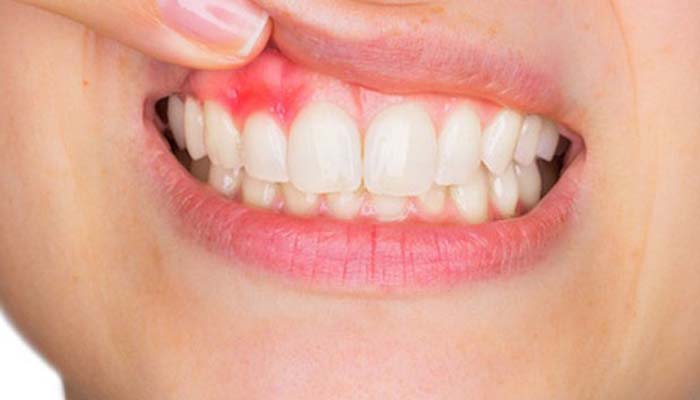Periodontal disease, commonly known as gum disease, is a prevalent condition that affects the gums and supporting structures of the teeth. Understanding how periodontal disease initiates and progresses is crucial for effective prevention and management. This comprehensive article explores the multifactorial causes, stages, and preventive measures related to the onset of periodontal disease.
Anatomy And Physiology of the Periodontium
Before delving into the onset of periodontal disease, it is essential to understand the anatomy of the periodontium—the tissues that surround and support the teeth. The periodontium includes the gingiva (gums), periodontal ligament, cementum (outer layer of the tooth root), and alveolar bone. These structures work together to anchor the teeth securely in the jawbone and provide support during chewing and speaking.
SEE ALSO: What Is The Best Antibiotic for Periodontal Disease
Role of Plaque in Periodontal Disease Initiation
The primary etiological factor in the development of periodontal disease is dental plaque—a biofilm composed of bacteria, salivary proteins, and food debris that adheres to the tooth surfaces. Plaque formation begins shortly after tooth brushing and continues to accumulate throughout the day. If not adequately removed through proper oral hygiene practices, plaque can mineralize and harden into calculus (tartar), which further exacerbates gum inflammation.
How Does Periodontal Disease Start
1. Gingivitis: The Initial Stage of Periodontal Disease
The first clinical stage of periodontal disease is gingivitis. Gingivitis is characterized by inflammation of the gingival tissues, which become red, swollen, and prone to bleeding, especially during brushing or flossing. The inflammatory response is primarily triggered by bacterial toxins released from plaque. Gingivitis is reversible with professional dental care and improved oral hygiene habits, including regular brushing, flossing, and professional dental cleanings.
2. Progression to Periodontitis
If gingivitis is left untreated, it can progress to periodontitis—a more severe form of gum disease characterized by irreversible damage to the supporting structures of the teeth. Periodontitis is marked by the formation of periodontal pockets, which are spaces between the gums and teeth that deepen over time. These pockets harbor bacteria and plaque, further contributing to inflammation and tissue destruction.
Factors Contributing to Periodontal Disease
Several factors increase the risk of developing periodontal disease:
Poor Oral Hygiene: Inadequate brushing and flossing allow plaque to accumulate, leading to gingivitis and potentially progressing to periodontitis.
Tobacco Use: Smoking and tobacco products impair blood flow to the gums, weaken the immune system, and hinder healing processes, making smokers more susceptible to periodontal disease.
Genetic Predisposition: Some individuals may inherit genetic traits that predispose them to severe periodontal disease, regardless of their oral hygiene habits.
Systemic Diseases: Conditions such as diabetes and cardiovascular disease are associated with an increased risk of periodontal disease due to compromised immune function and systemic inflammation.
Hormonal Changes: Hormonal fluctuations during puberty, pregnancy, and menopause can affect gum health, making women more susceptible to gingivitis and periodontal disease during these life stages.
Pathogenesis of Periodontal Disease
The pathogenesis of periodontal disease involves a complex interplay between bacterial pathogens in plaque, host immune response, and environmental factors. Bacteria in plaque produce toxins and enzymes that elicit an inflammatory response in the gingival tissues. Chronic inflammation leads to the destruction of the periodontal ligament fibers and resorption of alveolar bone, resulting in tooth mobility and eventual tooth loss if untreated.
Clinical Signs And Diagnosis
Diagnosing periodontal disease involves a comprehensive periodontal examination conducted by a dental professional.
Clinical signs include gum recession, bleeding upon probing, presence of periodontal pockets, and visible signs of tooth mobility. X-rays may be taken to assess the degree of bone loss around affected teeth.
Treatment And Management
Treatment strategies for periodontal disease aim to control bacterial infection, reduce inflammation, and restore periodontal health. Early-stage periodontitis may be managed with nonsurgical interventions such as scaling and root planing (deep cleaning) to remove plaque and calculus from the tooth surfaces and root surfaces. Adjunctive therapies may include local antimicrobial agents and systemic antibiotics in cases of severe infection.
Preventive Measures
Preventing periodontal disease starts with establishing and maintaining good oral hygiene practices:
Brushing: Brush teeth thoroughly twice a day with fluoride toothpaste, using a soft-bristled toothbrush to remove plaque from all tooth surfaces.
Flossing: Clean between teeth daily with dental floss or interdental cleaners to remove plaque and debris from areas that toothbrushes cannot reach.
Regular Dental Visits: Schedule routine dental check-ups and professional cleanings every six months or as recommended by your dentist.
Healthy Lifestyle Choices: Avoid tobacco use, maintain a balanced diet rich in vitamins and minerals, and manage systemic health conditions to reduce the risk of periodontal disease.
Conclusion
In conclusion, periodontal disease begins with the accumulation of plaque on tooth surfaces, leading to gingivitis and potentially progressing to periodontitis if left untreated. Early detection, prompt intervention, and diligent oral hygiene practices are key to preventing and managing this common dental condition. By understanding the underlying causes and risk factors associated with periodontal disease, individuals can take proactive steps to preserve their oral health and overall well-being.

